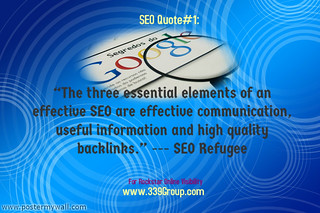By Hector Cisneros
 |
| Courtesy of Pxhere |
Has it been two or more years
since you last updated your website? Is your
website getting any significant
traffic? Does
Google, Yahoo or Bing consider your website a black hat feast filled spammy
with links? Is it not showing up in organic search in
these search engines’ first two pages? Is the special phone number you bought
to track visitors ringing off the hook or is it dead silent? Are your visitors
bouncing off your web pages faster than bouncy balls on hot pavement in the
summer, or are they sticking like superglue and reading every word? Are people filling
out your landing page forms to connect with you? Are they following you to your
social nets and connecting with you there? Are your site’s visitors converting
into sold customers? Is anybody complimenting you on your website, saying how
useful it is and they’re delighted they found you?
 Whoa! If you answered NO to any
of these questions, then your website and Internet strategy needs to be refreshed.
In this episode, we’ll cover the ins and outs of what has changed in website
marketing technology. We’ll provide specific recommendations that are backed up
by current marketing research and we’ll provide concrete examples of how you
can implement these latest changes. So read on and stay tuned to this week’s
show, “Website Makeover - Fixes to Boost Traffic, Conversion
and Rankings.”
Whoa! If you answered NO to any
of these questions, then your website and Internet strategy needs to be refreshed.
In this episode, we’ll cover the ins and outs of what has changed in website
marketing technology. We’ll provide specific recommendations that are backed up
by current marketing research and we’ll provide concrete examples of how you
can implement these latest changes. So read on and stay tuned to this week’s
show, “Website Makeover - Fixes to Boost Traffic, Conversion
and Rankings.”
So from reading previous
paragraph, you’ve now determined your website is dated and in an urgent need of
a refresh. Where do you start?
Questions You Need to Be Asking!
| Circle-no-questions (Photo credit: Wikipedia) |
If you’re not an expert on web
design and optimization, here are some questions you should ask your website
vendor. He or she should be able to provide understandable and logical answers.
If not, move on to another vendor. Your questions should probe how they track
number of visits, type of visitors, where visitors come from, keywords used,
bounce rate, conversions, drop off rate and position. Also ask how they know if
a page is missing important items or if undesirable items have been added. And
specifically ask what methodology they use. They won’t tell you exactly how
they do it, but they should be able to tell you what they do and why.
Now let’s talk about your website
in general. First and foremost, a web page needs to be focused. I say a web
page because pages are indexed (i.e., listed) individually. In essence, all
pages can act like landing pages, so it makes sense to make them as focused and
as specific as possible. This is true even if you are selling a variety of products
online. It makes more sense to organize and list your products by category on a
focus page, than to have lots of pages with mixed products. Focus increases
credibility, clarity and minimizes distractions. It provides motivation and
helps compel a visitor to move forward towards the actual sales process.
Focus Give You Power and Clarity
Being focused also provides the
search engine bots clarity to determine what
| Day 23 (Photo credit: ClawzCTR) |
each page’s content is about. It
helps them understand the content and to make sure there is no trickery going
on. The more work a search bot has to do to understand your page, the greater
the chance of it has of receiving a low ranking. Also, it’s important to
understand that most of a page’s rank comes from what others think of your
page. This is measured by the number of connections (authoritative backlinks,
social links, testimonials, ranting, listing and other connections) and by what
others are expressing about your web page (both positive and negative).
Now let’s look at the individual
elements of a web page. The domain name is part of every web page. Page titles should
have the domain as part of the title (for example, http://www.workingthewebtowin.com/testimonials). So if you’re
trying to get maximum focus, have the page title match as closely as possible
to the domain name. Another example would be; http://www.newwindowsjacksonville.com/testimonials.html.
The body of the page needs to include
focused paragraphs that use keyword
matching for the domain and page title. For
our second example above, the keywords would be “window installation.” What we
mean by focused paragraphs is that the verbiage primarily only talks about one
subject, in this case, window installation. All the content on the page
(verbiage, photos, videos, diagrams, etc.) needs to be focused on this one
subject. It can include who, why, what, how and when statements, but they all
need to related to your one focused subject.
There are also hidden elements
that are part of the html code that doesn’t show
| SEO Quote-SEO Refugee (Photo credit: iwrite4money) |
up on your visible pages.
These code elements need to be addressed as well. Items such as META tags
(keyword and description) and ALT tags (to describe pictures, etc), need to be
completed and match the content. These are the so-called code SEO elements. These elements are not as crucial as they once
were because search bots can now actually read and understand content.
Nevertheless, they do need to match and be filled out properly.
Not Only Do These Elements Not Help,
They Could Hurt Your Ranking!
Now let’s look at elements that
generally don’t help your ranking. For a many years, unscrupulous website
programmers have been using Java, Flash and CSS to trick the search engines into
believing that a web page deserved a higher rank based on overt deception and
not the value of its content. These black hat practices were par for the course
for any web page builder until recently. What changed all this was the search
spiders (programs that interpret what’s on a page) are now smart! Smart enough
to understand grammar and word meaning within its content. Smart enough to spot
most types of Java, Flash and CSS chicanery.
Now I’m not saying these elements
are only used for trying to game the system.
| Flash Back (Photo credit: JD Hancock) |
Quite the contrary, they have many
legitimate uses, especially for more complex tasks like forms, data base usage,
and for dynamically changing page elements. However, since this code is often
located at the beginning of a page, the search bots will closely evaluate it. If
a search bot deems the code to be suspicious, they may ignore the rest of the
page altogether, and kick the listing back to a human being to review. In
essence, it doesn’t help your cause at all. It’s been my experience that it’s
much easier to get a clean html coded page rank high than one full of Java,
Flash and CSS code.
Another mistake web designers
make ― especially those who work for an ad agency ― is to leave off the
backlinks connections. Most pages need to have a way to list links to other partner
or resource pages. These pages should include your social sites, blog, B2B
partners, rating sites, and others web properties that you feel are strategic
connections. We recommend including the top five social sites (Facebook,
Twitter, Google+, LinkedIn, and YouTube) along with Blogger. You should also have
links to your Google Map, Google Local and Picasa page as well. Authoritative
industry leaders’ backlinks are a big plus as well. Make sure you’re listed on
the website for the products you represent and that you reciprocate that back-link as well.
| Today's latte, Google Analytics. (Photo credit: yukop) |
If your site is already build,
Google and other search vendors provide tools to improve the function, speed
and tracking of your site. Don’t forget to set up your Google analytics and Google Web Master tools as they
will serve you well by helping your understand your web traffic.
Below are 12 credibility building
elements that every page needs to be successful. Having all of the following
elements will raise the chances of you converting a visitor from clicks into
cash at some point. Try place as many of the elements above the fold as
possible (i.e. the section of your page where you have to scroll to see more of
the site). This is especially true for the phone number, special offer and
testimonial video. Every element you leave out
lowers your chances for success.
12 Elements Every Web Page Needs
- Clean and professional overall look and feel
- Focused quality content
- Focus more on form rather than fancy aesthetics
- Easy-to-find and trackable phone number
- Easy-to-find company contact information
- A map to make it easy to find you
- Testimonials (both video and written)
- Unique Selling Proposition (USP) video and an “About Us” section
- Compelling offer (must be perceived as useful and valuable to motivate visitors)
- Contact form (must include name and email address; phone and physical address are optional)
- For selling online: easy-to-use and credible eCommerce buttons
- Ability to accept MasterCard, VISA, American Express, Discover and PayPal
Client Testimonial for Working The Web To Win
In this article I provided the
questions that website owners needs to ask themselves about the value,
functionality and performance of their websites. This article provides ways to
tell if your website is dated and in dire need of a refresh. Importantly, it also
provides details on what elements are needed to raise your ranking, increase
traffic, and increase the chances of you being found on Page One of the major
search engines.
 If you’d like to find more
articles like this read, “Is SEO Still Important in 2013”
and “What’s Up With SEO?” or enter the
words “SEO” in the search box at the top of this blog. If you
found this article useful, please share it with friends, family, co-workers and
associates. If you have something to add or a difference of opinion, place them
in the comments section. It’s been my pleasure sharing this information
with you.
If you’d like to find more
articles like this read, “Is SEO Still Important in 2013”
and “What’s Up With SEO?” or enter the
words “SEO” in the search box at the top of this blog. If you
found this article useful, please share it with friends, family, co-workers and
associates. If you have something to add or a difference of opinion, place them
in the comments section. It’s been my pleasure sharing this information
with you.
That's
my opinion; I look forward to hearing yours.
If you would like a free copy of our book, "Internet Marketing Tips for the 21st Century," please fill in the form in the upper righthand sidebar to get instant access toyour free eBook. Your information is always keep private and never sold.
Hector Cisneros is a partner, COO and Social
Media Director for the award-winning, Internet-based marketing firm, Working the Web to Win, in Jacksonville, FL. You can connect
with him on Twitter, Facebook, Google+, LinkedIn, and YouTube. He’s also the co-host of
BlogTalkRadio’s “Working the Web to Win,” where he and Working the Web to Win’s
co-founder, Carl Weiss, make working the web to win simple for every
business. Additionally, Hector is a syndicated writer on EzineOnline and
is an active blogger (including ghostwriting). He's a published author of two
books, "60 Seconds to
Success"(available
at Amazon and B&N), and "Internet Marketing for the 21st Century," which you can get by filling out
the form above. He’s also the co-author of the new book, “Working The Web to Win,” which is
now available on Amazon.com.
Related articles






The era of "Set it and Forget it" online marketing are over. If you want to start succeeding online stop acting like it's 1999.
ReplyDeleteI wish I knew as much about the Internet and all things Google as Mr. Cisneros. He's a treasure trove of actionable information.
ReplyDeleteI'm going to share this blog with my company's IT team. Thanks for the great info Hector, you're always right on the mark.
ReplyDeleteI'm truly enjoying the design and layout of your blog.
ReplyDeleteIt's a very easy on the eyes which makes it much more enjoyable for me to
come here and visit more often. Did you hire out a designer to create your theme?
Superb work!
Take a look at my site :: Best success quotes that will change your life